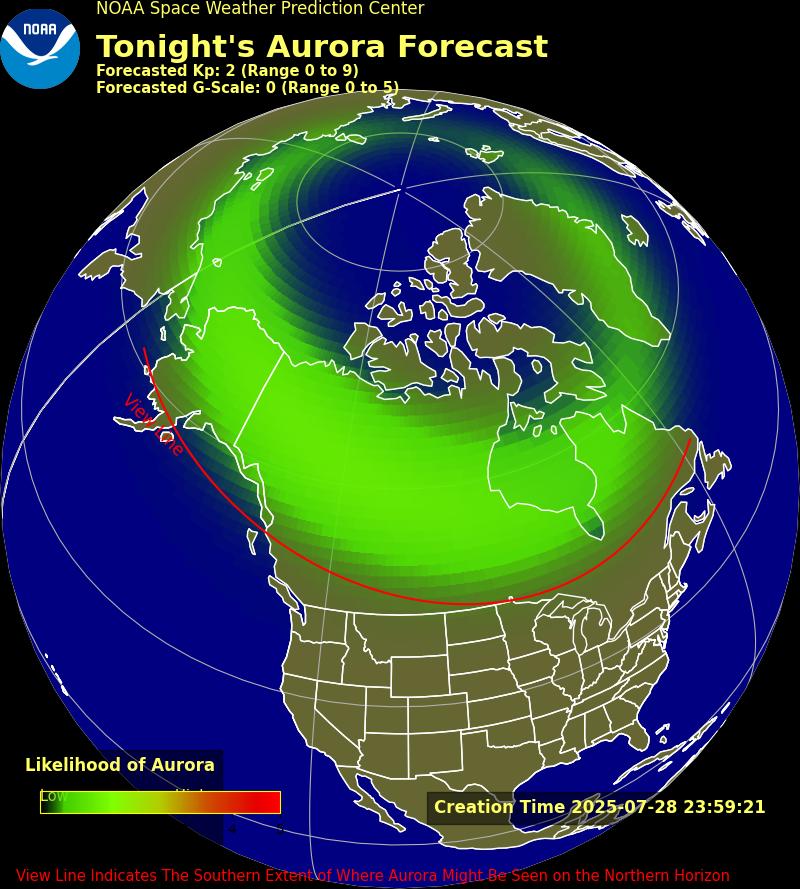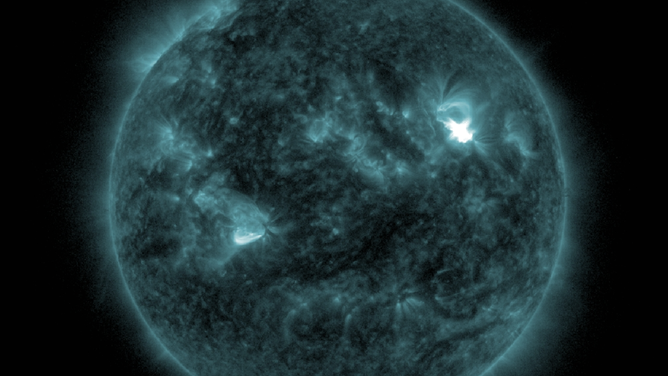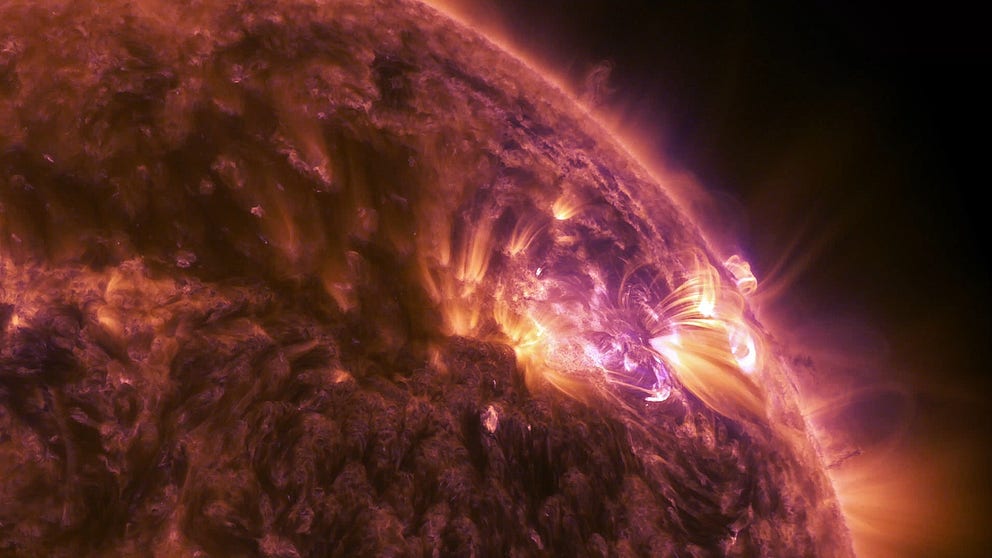Geomagnetic storm could produce aurora lights in US
NOAA's Space Weather Prediction Center said region 3663 of the Sun is producing strong solar flares and could create more flares through this week. A Geomagnetic Storm Watch is in effect through Monday after a coronal mass ejection sent an eruption of plasma blasting toward Earth.
Space weather explained: What is a solar flare?
The largest explosions in the solar system, a solar flare is an explosion of energy that occurs on the sun’s surface, often appearing as a localized burst of bright light.
The Sun produced at least two strong solar flares that sent plasma blasting toward Earth, which could impact radio communications and create vibrant Northern Lights displays across the northern U.S. this week.
NOAA’s Space Weather Prediction Center (SWPC) issued a Geomagnetic Storm Watch on Saturday after Sun-observing satellites recorded a coronal mass ejection (CME) departing on Friday. The peak impacts from the eruption of plasma on Earth were expected on Sunday and Monday. On a 5-point scale, the SWPC issued a moderate Level 2 watch for Monday.
Auroras occur when charged particles from the Sun interact with the Earth’s atmosphere, creating the Northern and Southern lights.
Intense space weather events can cause aurora lights to appear farther away from Earth's poles. According to SWPC's aurora forecast, the Northern Lights could be visible from northern Idaho to the Upper Peninsula of Michigan on Monday night.
MEET STEVE: A NEW SPACE WEATHER PHENOMENA BEING SEEN WITH AURORA LIGHTS

(SWPC)
In addition to the CME potentially creating aurora lights displays, the SWPC said it has been tracking the activity of a highly active region of the Sun, producing strong and moderate solar flares since late April.
According to the SWPC, multiple strong X-class flares were seen on Sunday and multiple M-class flares over the weekend. X-class flares are the most intense flares, and M-class are the second-most intense.
Solar flares are blurts of electromagnetic radiation and can cause high-frequency radio blackouts and pose risks to space launches and spacecraft orbiting Earth. However, most people do not need to be concerned as these energetic particles do not reach low enough into Earth's atmosphere to affect the public.
WHAT IS THE 11-YEAR SOLAR CYCLE?
SWPC said these flares could temporarily impact high-frequency radio signals through Tuesday.

NOAA's GOES East satellite SUVI instrument captures a solar flare in the Sun's region 3663 on May 5, 2024.
Solar flares typically occur in the Sun's active regions and are often associated with sunspot groups. The flare activity comes from an area of the Sun known as 3663.
"Region 3663 is the largest and most complex sunspot region on the disk, and has produced a total of 14 M-flares and three X-flares since it emerged on April 30," according to the SWPC.
More flares are likely in the week ahead from this active region, according to NOAA's space weather forecasters.
